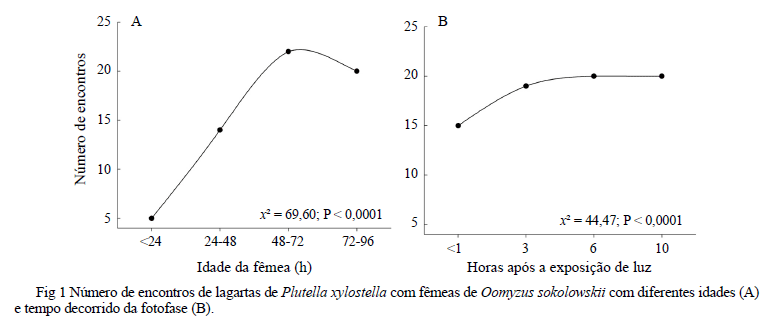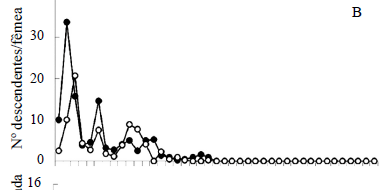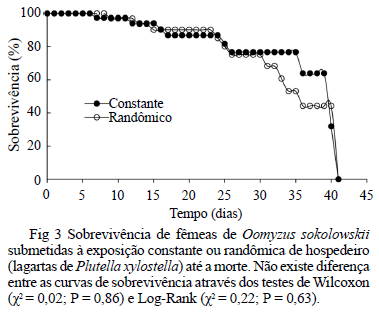The high reproduction rate, potential to cause damage, wide geographic distribution and resistance to insecticides of Plutella xylostella (L.) makes difficult its efficient control. However, larvae and pupae of this pest are naturally parasitized by Oomyzus sokolowskii (Kurdjumov), providing opportunities to improve the natural parasitism. This study investigated the effects of the age of adult parasitoids, host availability and time of exposure on O. sokolowskii parasitism behavior. The number of larvae encounters by parasitoid females and the parasitism rate increased with parasitoid age up to 96h. The parasitization was higher when wasps received a constant number of hosts daily in comparison with a random number (13.3 versus 8.9 larvae parasitized). Female parasitization activity was maintained up to the age of 20 days in both treatments and exhibited similar longevity (constant host = 33.5 d; and random host = 34.7 d). The progeny produced per female and the number of parasitoids emerged per host significantly decreased as wasps aged. There was no significant effect of the light regime (12h darkness or 12h light exposure) on the parasitization, although parasitoid was more active after 3h of light exposure. Therefore, further studies on field application of O. sokolowskii should consider the release of 48h- to 72h-old parasitoids at dawn as a way to increase the success of host parasitization.
Diamondback moth; Plutella xylostella; host searching; sexual maturation; biological control

 Effect of age, photoperiod and host availability on the parasitism behavior of Oomyzus sokolowskii Kurdjumov (Hymenoptera: Eulophidae)
Effect of age, photoperiod and host availability on the parasitism behavior of Oomyzus sokolowskii Kurdjumov (Hymenoptera: Eulophidae)



